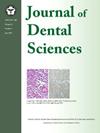光生物调节对头颈部放化疗所致口腔黏膜炎的潜在作用:文献综述
IF 3.1
3区 医学
Q1 DENTISTRY, ORAL SURGERY & MEDICINE
引用次数: 0
摘要
口腔黏膜炎(OM)是头颈部放化疗的常见副作用。它表现为口腔黏膜疼痛、溃疡性病变,严重损害基本功能,如进食、说话和保持口腔卫生。它最终会对病人的生活质量产生不良影响。光生物调节疗法(PBMT)已成为一种很有前途的非侵入性治疗OM的方法。由于研究结果之间存在争议,本文献综述综合了近期评估PBMT在成人和儿童癌症患者中使用的随机对照试验的结果。本综述还强调了将PBMT纳入常规支持性癌症治疗的机制、临床疗效和未来的挑战。有证据表明,PBMT可显著降低OM的严重程度和持续时间,改善患者报告的结果,并将治疗相关的发病率降至最低。通过使用低强度光源-通常是激光或led - pbmt增强细胞代谢,减少炎症,减轻疼痛,促进粘膜愈合。尽管PBMT具有临床潜力,但由于治疗方案的差异和标准化的限制,它的广泛实施受到了阻碍;简而言之,激光方案-波长(630-980 nm),能量密度(2-6 J/cm2)和应用时间(10-125 s/点)通常用于预防和治疗头颈部放化疗引起的OM。然而,未来的长期随访研究将有必要标准化PBMT方案,因为标准化对于将PBMT纳入常规癌症治疗至关重要。本文章由计算机程序翻译,如有差异,请以英文原文为准。
The potential effect of photobiomodulation on oral mucositis induced by head and neck radio-chemotherapy: A literature review
Oral mucositis (OM) is a common side effect of head and neck radio-chemotherapy. It manifests as painful, ulcerative lesions in the oral mucosa, significantly impairing essential functions such as eating, speaking, and maintaining oral hygiene. It finally has adverse effects on the patient's quality of life. Photobiomodulation therapy (PBMT) has emerged as a promising non-invasive modality for preventing and treating OM. Due to controversy among the results of studies, this literature review synthesizes findings from recent randomized controlled trials that evaluated the use of PBMT in adult and pediatric cancer patients. This review also highlights the mechanisms, clinical efficacy, and future challenges of integrating PBMT into routine supportive cancer care. The evidence shows that PBMT significantly reduces the severity and duration of OM, improved patient-reported outcomes, and minimized treatment-related morbidity. By utilizing low-intensity light sources—typically lasers or LEDs—PBMT enhances cellular metabolism, reduces inflammation, alleviates pain, and promotes mucosal healing. Despite its clinical potential, widespread implementation of PBMT is hindered by variability in treatment protocols and limited standardization; in brief, laser protocols — wavelengths (630–980 nm), energy densities (2–6 J/cm2), and application durations (10–125 s/point) are commonly used for preventing and treating OM induced by head and neck radio-chemotherapy. However, future studies with long-term follow-ups will be necessary to standardize PBMT protocols, as standardization is essential to integrate PBMT into routine cancer care.
求助全文
通过发布文献求助,成功后即可免费获取论文全文。
去求助
来源期刊

Journal of Dental Sciences
医学-牙科与口腔外科
CiteScore
5.10
自引率
14.30%
发文量
348
审稿时长
6 days
期刊介绍:
he Journal of Dental Sciences (JDS), published quarterly, is the official and open access publication of the Association for Dental Sciences of the Republic of China (ADS-ROC). The precedent journal of the JDS is the Chinese Dental Journal (CDJ) which had already been covered by MEDLINE in 1988. As the CDJ continued to prove its importance in the region, the ADS-ROC decided to move to the international community by publishing an English journal. Hence, the birth of the JDS in 2006. The JDS is indexed in the SCI Expanded since 2008. It is also indexed in Scopus, and EMCare, ScienceDirect, SIIC Data Bases.
The topics covered by the JDS include all fields of basic and clinical dentistry. Some manuscripts focusing on the study of certain endemic diseases such as dental caries and periodontal diseases in particular regions of any country as well as oral pre-cancers, oral cancers, and oral submucous fibrosis related to betel nut chewing habit are also considered for publication. Besides, the JDS also publishes articles about the efficacy of a new treatment modality on oral verrucous hyperplasia or early oral squamous cell carcinoma.
 求助内容:
求助内容: 应助结果提醒方式:
应助结果提醒方式:


